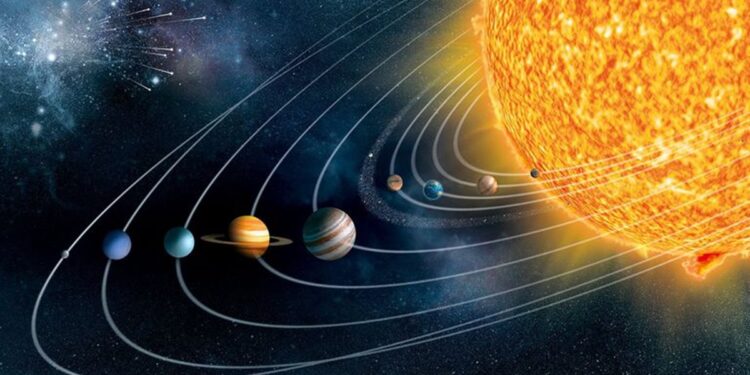Kinematics is a branch of physics that deals with the different types of motions of objects and the various aspects related to it like speed, acceleration, range, etc. Motion can broadly be categorized into two parts, straight line, and curved motion.
A special case of curved motion is a circular motion that is further categorized into rotation and revolution. After careful study of the aspects of rotation and revolution, physicists have now found various applications of these in daily lives like a dynamo, motors, rotating paddle switch, etc.
Circular motion or curved motion is also seen in nature. Now we know that the electrons revolve around the nucleus of an atom and the planets revolve around the sun in space.
Similar is the case for rotation. We see many objects rotating like a spinning top. Even the phenomena of day and night on the earth are due to its rotation on its axis.
Translation or straight-line motion combined with rotation and revolution gives rise to various other types of motions that are seen in our surroundings like the motion of wheels of cars, bicycles, or even rickshaws.
MORE ABOUT ROTATION
The motion of rotation can be easily visualized by imagining a spinning top. The top when released, spins at one position, around an imaginary line passing through its interior. This kind of circular motion that happens at one place and around a specific imaginary or real axis is known as rotation.
Rotation is observed in various things in nature like small particles of the quantum world like electrons, fermions, and quarks. The spin characteristic of the small particles arises from their spinning or rotating motion.
Even planets rotate around an imaginary axis and it gives rise to various natural phenomena like day and night, magnetic field subtracts value from the gravity of a planet at various positions and also contributes to the level of water in the major water bodies.
The rotation has various applications like rotating paddle switches and the working of motors and generators in the modern world. After various developments and inventions like the faraday laws of electricity and magnetism, more and more applications of rotation have been found and used in the modern world.
MORE ABOUT REVOLUTION
Another type of circular motion is when a body moves around another body or point. The other body may be stationary or moving and revolution can continue independently. This point is still a fixed point as far as revolution motion is considered.
Revolution is also a common motion that is seen in our everyday lives. For example, children playing with a thread attached to a stone and revolving it at a high speed. Revolution is also seen in the planets around the sun.
All the planets, along with rotating on their axis, also move in a curved orbit around the sun. The planets closer to the sun have smaller orbits and take less time to complete a circle around the sun, while those that are further from the sun, take longer.
One complete circle around the sun marks the duration of one year on that planet. Thus the length of a year varies for various planets, being the least for Mercury, closest to the sun, and the maximum for planet Neptune, farthest from the sun.
In the case of planets, it was later found that they do not revolve around the sun in typical circular orbits but rather on an elliptical orbit. An ellipse is a closed curved shape that seems like a squashed circle but has a typical mathematical equation.
The planets revolve around the sun under its gravitational influence in elliptical orbits with the sun at one of the fixed points of the ellipse, called the focus.
Actually, the shape of the orbit of the planet depends upon the amount of gravitational interaction with the sun. In the case of other objects like comets, the gravitational interaction with the sun is such that their orbit is an open curve like a hyperbola.
In the case of most planets, it is an ellipse, some being very close to a circle.
THE MOONS
Many planets have natural satellites called moons. These also rotate on their axis but revolve around their respective planets rather than the sun.
These moons are gravitationally bound to their parent planets just like planets, asteroids, comets, and dwarf planets of the solar system are gravitationally bound to the sun.
The moon of Earth is called Luna and it takes twenty-eight days for it to rotate once on its axis as well as revolve once around the Earth.














